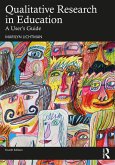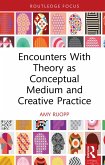Dieser Download kann aus rechtlichen Gründen nur mit Rechnungsadresse in A, B, BG, CY, CZ, D, DK, EW, E, FIN, F, GR, HR, H, IRL, I, LT, L, LR, M, NL, PL, P, R, S, SLO, SK ausgeliefert werden.
Hinweis: Dieser Artikel kann nur an eine deutsche Lieferadresse ausgeliefert werden.
Bridget Turner Kelly, PhD, Associate Professor, Higher Education, Loyola University Chicago
Latz's Photovoice Research in Education and Beyond provides a rich how-to guide to photovoice which, importantly, offers orientations rather than destinations. This manifests in a wide array of theoretical, practical, and ethical building blocks that non-prescriptively invite new and seasoned researchers alike to (re)construct and enact photovoice as a methodology which might critically and creatively respond to the diversely situated communities of knowers with whom they work.
Marc Higgins, PhD, University of Alberta
In this book, Dr. Latz thoroughly and accessibly examines the evolution of and philosophical underpinnings of photovoice as a methodology. She raises issues and considerations, and encourages researchers to make their own decisions about how to address various challenges based on their own contexts and specific experiences. I look forward to adding this book to my collection on critical, innovative methodologies and recommend it for doctoral students and colleagues interested in engaging in critical, participatory action research.
Chris Linder, PhD, Assistant Professor, University of Georgia
Amanda O. Latz exemplifies the web of connections created through photovoice methodology. From outlining transdisciplinary theoretical contributions, to illuminating eight steps in the collaborative processes that are hallmarks of scholarly photovoice, to sharing personal vignettes about her work as a tertiary education researcher, Latz demonstrates expertise that others can benefit from immediately. Particularly beneficial is her inclusion of the exhibition facet of photovoice.
Katie Branch, PhD, Associate Professor, Human Development & Family Studies, University of Rhode Island
Dr. Latz skillfully outlines the historical and philosophical underpinnings of photovoice while at the same time provides practical information for researchers interested in conducting their own photovoice study. Importantly, this book fills a gap regarding how to analyze data generated from photovoice studies and disseminate knowledge gained. This book will be an invaluable resource for researchers, educators, and practitioners interested in utilizing photovoice in their own research projects.
Carrie A. Kortegast, PhD, Assistant Professor, Higher Education, Northern Illinois University
Latz presents a comprehensive overview of photovoice and skillfully guides the reader through examples for how and why scholars could benefit from this method. Any educator who wishes to refresh or expand the lenses they bring to their research and practice should reference this book.
Kristin McCann, PhD, Northwestern University









